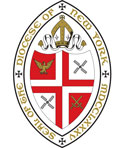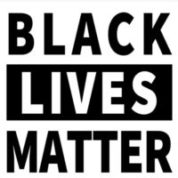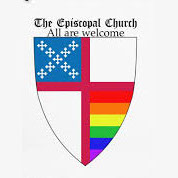Podcast: Play in new window | Download (Duration: 17:20 — 24.5MB)
Subscribe: Apple Podcasts | RSS
How many of you, when you got to church today and saw that we were celebrating Candlemas, said, Oh boy! My favorite feast day! How many of you have any idea what Candlemas is about? How many of you have even ever heard the term Candlemas?
So Candlemas is a feast we only celebrate here every seven years or so. We only celebrate it when February 2 falls on a Sunday – when it is a feast of such importance that the Church says it takes precedence over the usual Sunday celebration. We could, of course, celebrate it every year on February 2 no matter what day that falls on, and maybe some day we will again, when people’s lives aren’t so ‘busy’ and their priorities get straightened out and they come to church several times a week. There is a whole rich array of wonderful feast days in the church that we hardly ever see – all these excuses for parties that we just let slip by us. What a shame.
At any rate: the feast we celebrate today has three names: Candlemas, the Presentation of Our Lord Jesus Christ in the Temple, and the Purification of the Blessed Virgin Mary. Now when your friends ask you what you did in church today, you can recite that long list. It’s called Candlemas because it was the day the church blessed its stock of candles for the year – and we’ll be doing something with that by the end of the service. It’s the Presentation of Our Lord Jesus Christ in the Temple because we read the story of the baby Jesus being presented in the Temple, and the prophecies that Simeon and Anna tell about him. It’s the Purification of the Blessed Virgin Mary because at that presentation time Mary, like any other Jewish woman of her time, had to be ritually purified after childbirth before she could offer worship again in the temple.
And this day has more names than that. It’s Groundhog Day in America, when we find out from the groundhog if we have more winter left or whether spring will be early – which connects long back to rural people who knew that this is the day exactly halfway between the Winter Solstice and the spring Equinox: the saying goes, ‘If Candlemas Day be fair and bright, Winter will have another flight. If Candlemas Day be shower and rain, Winter is gone and will not come again.’ It didn’t start with Punxsutawney Phil or Staten Island Chuck, you see. And this day was important for other reasons than weather predictions – on the pagan calendar, it was a ‘cross-quarter’ day in the cycle of the year. It was a day for purification, the day to take out and burn the Yuletide greens (so if you haven’t done anything with your Christmas tree yet, today’s the day); the day to carry torches in procession around the city to purify the air, as in old Rome; the day in Celtic cultures to carry torches around the fields to purify and invigorate them for the coming growing season; and, the day to start plowing, literally purifying and preparing the earth. And in this country, we honor the day by watching a ritual gladiator contest and consuming food and drink that makes us want to start our cleanse first thing tomorrow.
So no matter what the tradition, purification is the theme of the day. It’s not hard to see how the early Christians attached the feast of the Presentation to the pagan day of purification, and how the several threads of tradition intertwine today. It even feels right for this time of year – it’s beginning to feel like spring, especially with the warmer weather we’ve been having, and it makes you want to open the windows, let the fresh air in, do some spring cleaning to clear away winter’s grime. Purification, preparation for what is to come, light and darkness – and all of this is mixed in the story of Jesus and his mother in the temple.
Two separate events are brought together in this story, the purification of the mother and the presentation of the child, both required by the Law. The firstborn son was presented in the Temple with a ‘redemption price’ according to Jewish law. Also according to the Law, a woman had to be purified after childbirth in order to offer worship in the Temple and return to normal life again. A woman was considered unclean for a certain number of days after childbirth – 40 days after a boy child, 60 days after a girl child – yes, argh – until she performed the required ritual sacrifice and was made ‘clean’ or ‘purified’ – all of this part of the system of purity that quite often classed women as unclean for various reasons, along with people suffering from certain diseases and anyone who dealt with the dead. Some of the requirements of the code had their roots in basic hygiene, but much of the system served to keep certain elements of the population in an inferior position, prevented from offering worship in the temple or living with the freedom others had, and there’s quite a lot to be said about that in another sermon or maybe twenty or so.
But setting that aside, the religious foundation of the purity code around women has some interesting symbolism beyond just that men thought women were yucky. A woman was called unclean after childbirth because she had lost blood, and her blood was synonymous with her vitality or life force. All life comes from God – in the first creation story in Genesis, God breathes into the newly created human body, and it lives. So to lose one’s blood or life force was to be separated from God, the source of life. A woman, or anybody unclean through loss of blood, had to go through a ritual purification in order to be restored to God through the sacrifice of another creature, its lifeblood given to restore her life’s connection to God. And all of that, symbolically, meant that purification clears away what separates a person from God, restoring life and bringing new life.
And all of us, I dare say, are in need of that kind of purification. All of us are in need of God, the source of our life – all of us long to be restored to full and abundant life, which is exactly what Jesus promised those who followed him. Whatever the path we are on, most of us find again and again that things aren’t right in our lives – we long to find some way of getting things right, getting our life force renewed – being purified, in other words.
But the process of purification is not always easy. The reading from Malachi speaks of the ‘messenger of the covenant’ who will come to purify and refine the people like a refiner’s fire purifies gold and silver: extreme heat, melting down the metal in order to destroy impurities. Or on this Candlemas day, we can use the image of plowing – the plow uproots what is dead, destroying the unwanted growth and turning everything upside down in order to purify the soil and make way for new growth. There’s a lot of destruction in both of those images, as there is in the old ritual of sacrifice, and none of those sound very nice at all – they sound painful and full of loss. And yet the longing for fuller life is still there, even when we know what it might cost.
Simeon and Anna in Luke’s story are two examples of this kind of longing for God – two of a number of examples in the Bible of old men and women who finally encounter God after a lifetime of faithfulness. Simeon, Luke says, yearned throughout his life to see the Messiah, having been promised this by the Holy Spirit. Experiencing the breath of God brought him a longing for more, a hunger to be right there in God’s presence. And on this day he came into the temple, ‘guided by the Spirit’, seeking the presence of God. And he found God in an unusual place, in a baby in its mother’s arms. The song he sings, the ‘Nunc dimittis,’ is one of completion, of finding the fulfillment he had been seeking: ‘God, you have set me free, now you can let me go in peace, for I have seen the light of your salvation in this child. My life, and the salvation of your people, is complete.’ And Anna the prophet, in the temple ‘worshiping with fasting and prayer night and day’ for some 60 years, sees this child and knows him to be the redemption of Jerusalem, and she tells everyone around that this is the one they have been waiting for. Anna’s and Simeon’s years of waiting, years of preparing themselves, listening to the Holy Spirit, clearing away all that could block them from God, brings them at last to the presence of God – and, with all that preparation, they know God when they see God there before them.
That, ultimately, is what we are seeking after: to know God, to be one with God. All of our mistaken paths of success and security and romance are really in the end detours on that one path, to our source of life in God. We get separated from that life by all kinds of things that draw us away, block our view, keep us from the full life we are promised. We fear that clearing and burning away those things can be painful – and yet the one who has come to ‘purify and refine’ us, the one who stands poised at any moment to restore us to God, is the same baby for whom Simeon and Anna sang in the temple. It is the same one who, in the words of the letter to the Hebrews, ‘became like his brothers and sisters in every respect, so that he might be a merciful and faithful High Priest’ – the one who has been in our shoes and gone about in our flesh and experienced the pain and ‘lifelessness’ – death – of separation from God. In the end, it doesn’t have to be that hard or painful to be purified – it’s just being set free, to go in peace as we are promised, seeing with our eyes the light prepared by God for all the world to see. The early church theologian Irenaeus of Lyons said, ‘The glory of God is the human person fully alive.’ Fully alive! This is the light we sing about on this feast of Candlemas…this is the full and abundant life that we are promised.
When we leave here today we will carry with us candles, candles that we once lit and held while singing ‘Silent Night’ in church on Christmas Eve. Candles that show the light of Christ, the light come into the world to help us see clearly, to light our way back to God, the source of all our life. Take these home, light some more candles with them there tonight, do some feasting if you like. Breathe in the breath of God, God’s life in you, and be made whole. Amen.




